Polignano a Mare hugs Italy’s Adriatic coast, and honestly, I felt swept away the moment I saw its dramatic cliffside setting. The main beach nestles between towering limestone cliffs, forming a natural amphitheater that shows off the turquoise water below.
This “cliff-wrapped” paradise just might be the most photogenic beach in Puglia. The historic town seems to float above the crystal-clear sea, creating a view that’s hard to beat.
That first glimpse of the pebble beach sticks with me. You reach it by following a narrow path cut right through the rock face.
Polignano doesn’t charm you with endless sandy stretches. Instead, it wins you over with this wild mix of rugged cliffs and calm waters. Sure, the beach isn’t huge, but its beauty and character more than make up for that.
As I strolled along the shoreline, I found hidden caves carved out by centuries of waves. These grottos add another layer of magic to the place.
The contrast between the white stone buildings above and the blue waters below is something you don’t forget. If you’re headed to southern Italy, you really should put this coastal gem right at the top of your list.
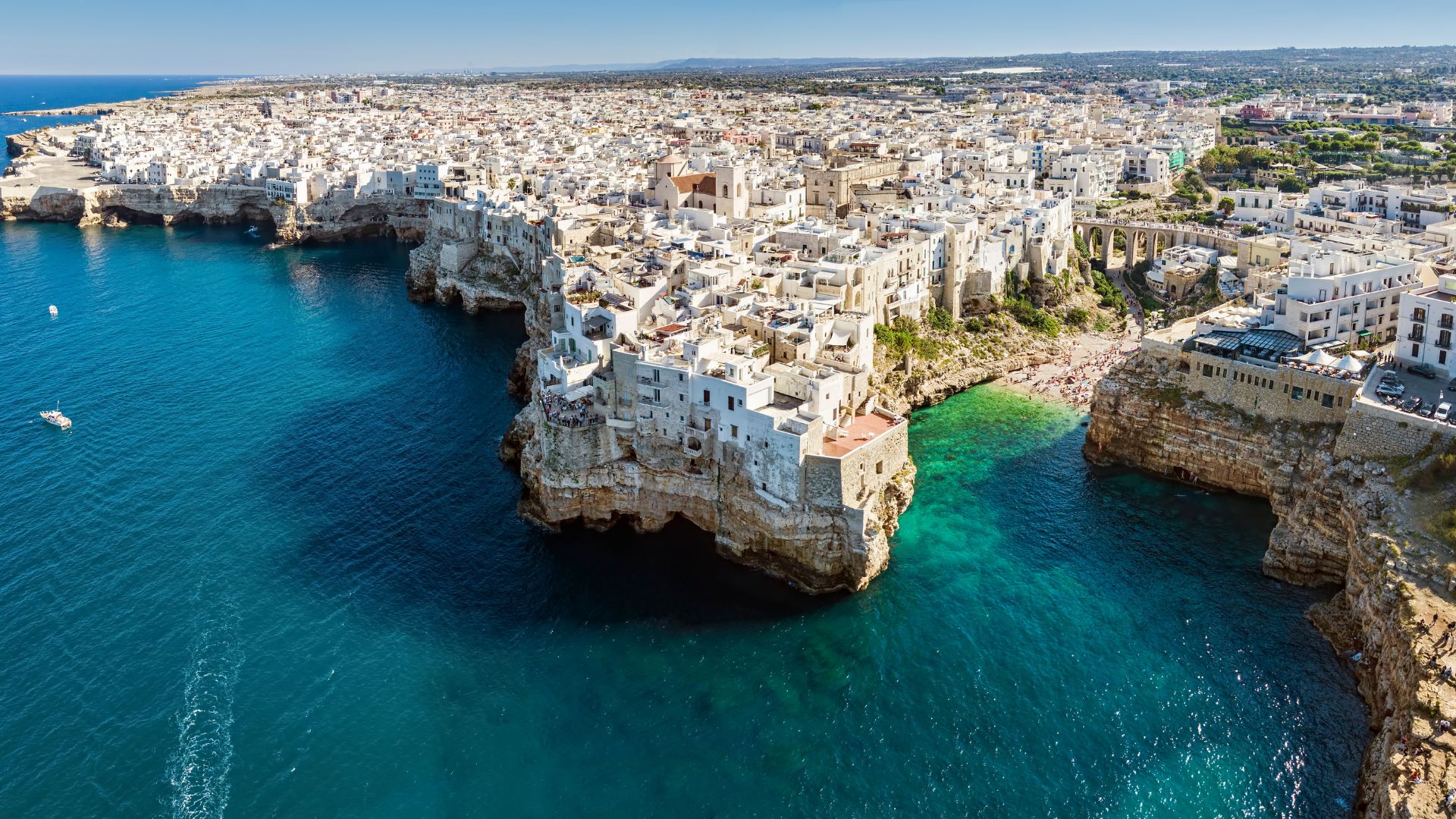
Polignano a Mare: Setting the Scene
Polignano a Mare perches on limestone cliffs over the Adriatic Sea, grabbing your attention with its geography and deep cultural roots. This little coastal town blends natural beauty with unmistakable Italian charm.
A Glimpse into the Heart of Puglia
Wandering Polignano a Mare feels like you’ve stepped into a postcard from the south of Italy. The whitewashed buildings of the historic center pop against the deep blue sea.
Narrow, winding streets lead to surprise viewpoints. I’ve lost track of the hours I’ve spent just soaking in the scenery.
Polignano offers more than just views. The old town (centro storico) mixes Arabic, Byzantine, Spanish, and Norman touches in its architecture.
Local shops tempt you with handcrafted ceramics and olive oil, giving you a real taste of the region’s traditions.
On summer evenings, the main piazza buzzes with locals and tourists enjoying gelato. Street musicians add a soundtrack that’s pure Puglia.
The vibe here feels so much more authentic and relaxed than Italy’s busier destinations.
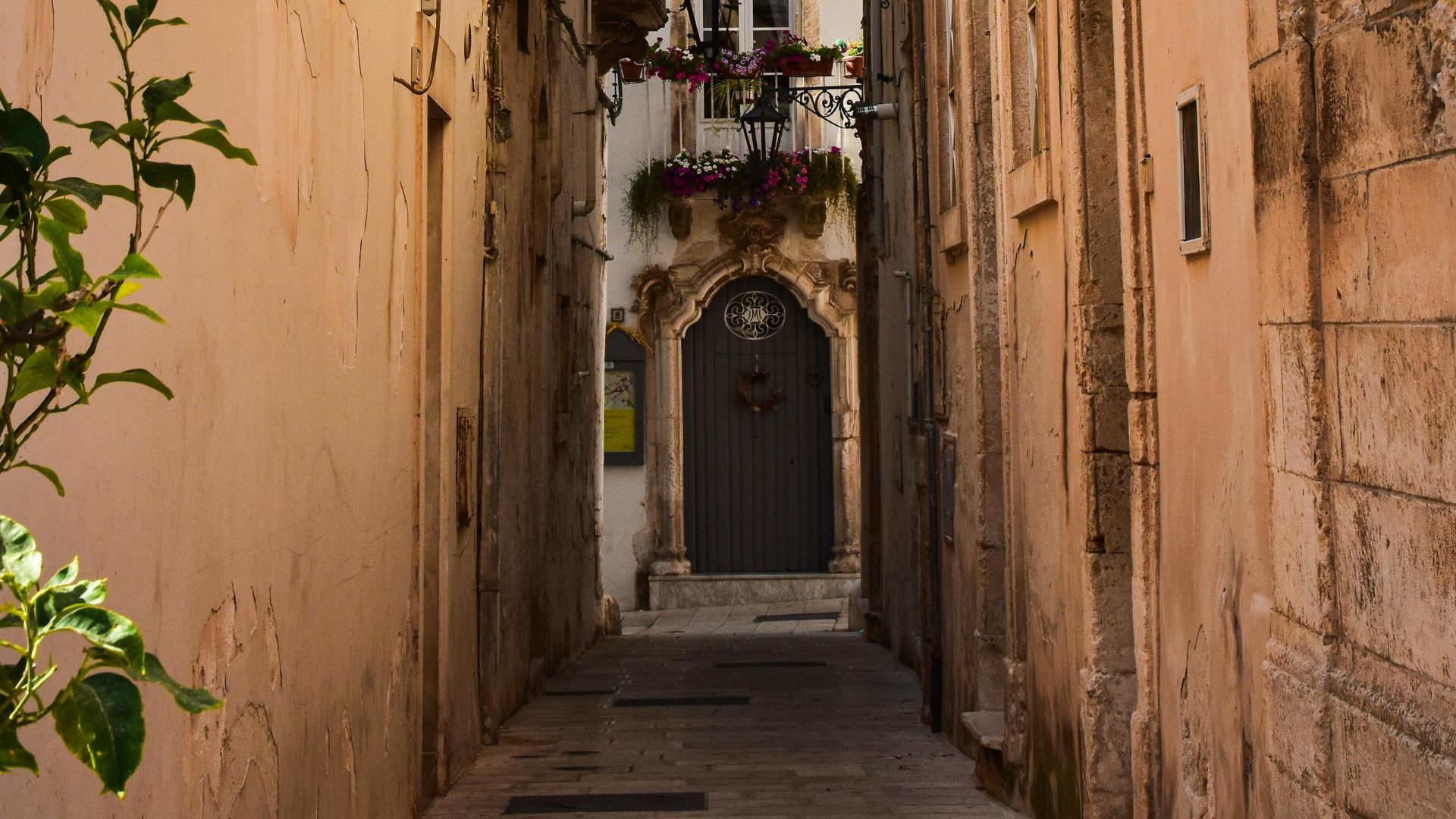
How the Sea Shapes Local Life
The Adriatic does more than just border Polignano—it shapes everything about it. Fishermen still set out in traditional wooden boats every morning, hauling in fresh catches for the town’s restaurants.
I’ve watched them unload while eager chefs wait at the tiny harbor.
Seafood rules the menus, and sea urchins are a local favorite. The town’s bond with the water runs deeper than food, though—many locals swim every day, no matter the season.
Maritime traditions show up in local festivals. During the feast of San Vito, Polignano’s patron saint, his statue travels by boat along the coast.
You see how the sea weaves itself into daily life here.
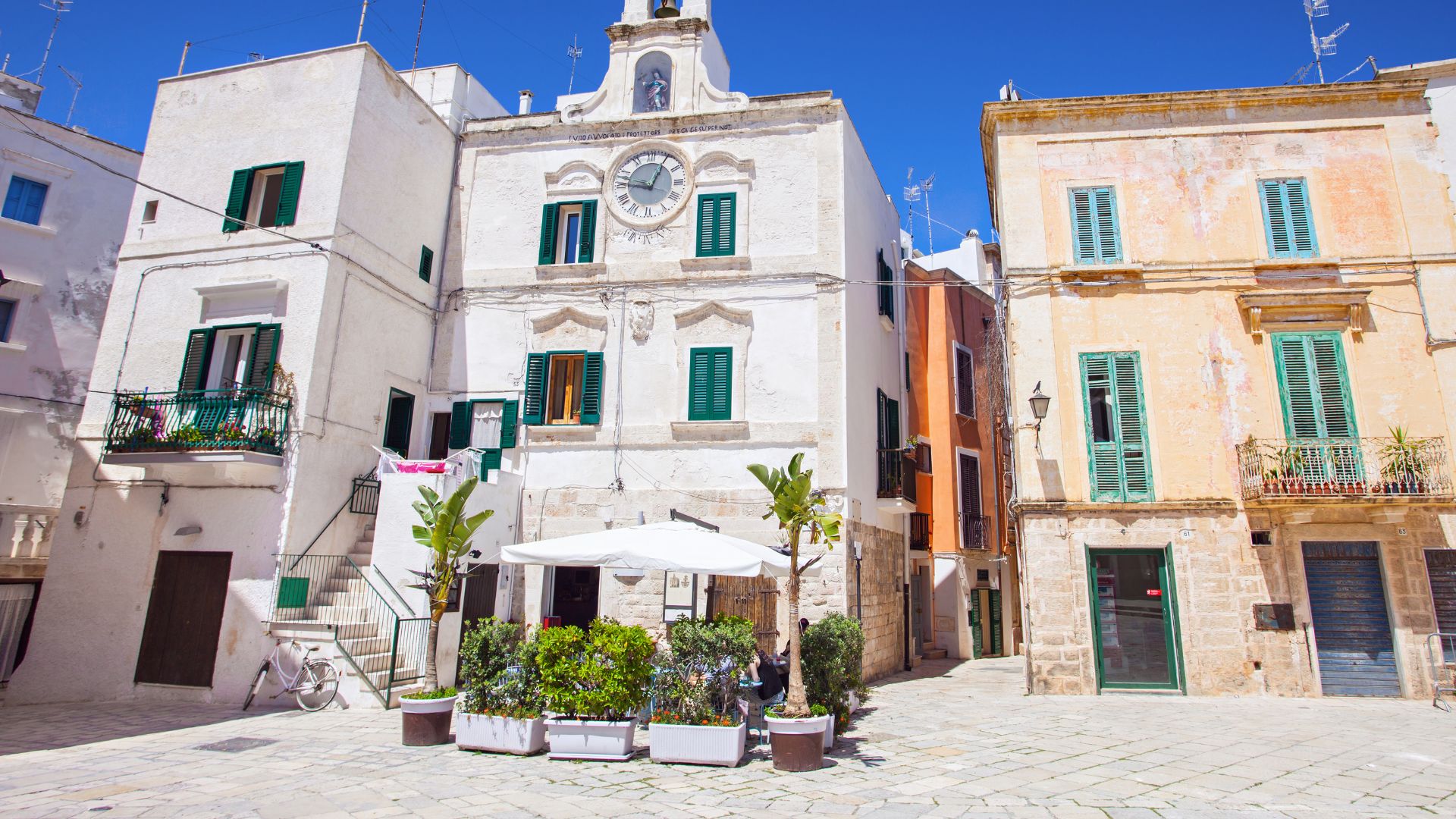
The Unique Geography of Cliff-Wrapped Beaches
Polignano’s dramatic cliffs set it apart. The town rises above turquoise waters, perched on limestone that drops straight into the sea.
Lama Monachile, the main beach, sits tucked in a natural cove surrounded by rock walls. It feels like a natural amphitheater, and the setting is just jaw-dropping.
You reach the beach by crossing a Roman bridge that spans a gorge carved by an ancient river. The smooth pebbles below and the rugged cliffs above make a scene you won’t find anywhere else.
Smaller coves dot the coastline, and you can only get to some by boat or by brave cliff jumping. These hidden spots make perfect stages for the Red Bull Cliff Diving competition, which puts Polignano on the global map.
The sea has carved grottos into the cliff bases, creating glowing blue caves when sunlight filters through the water. Boat tours give you the best look at these wonders. The Adriatic never really stops shaping this coastline.
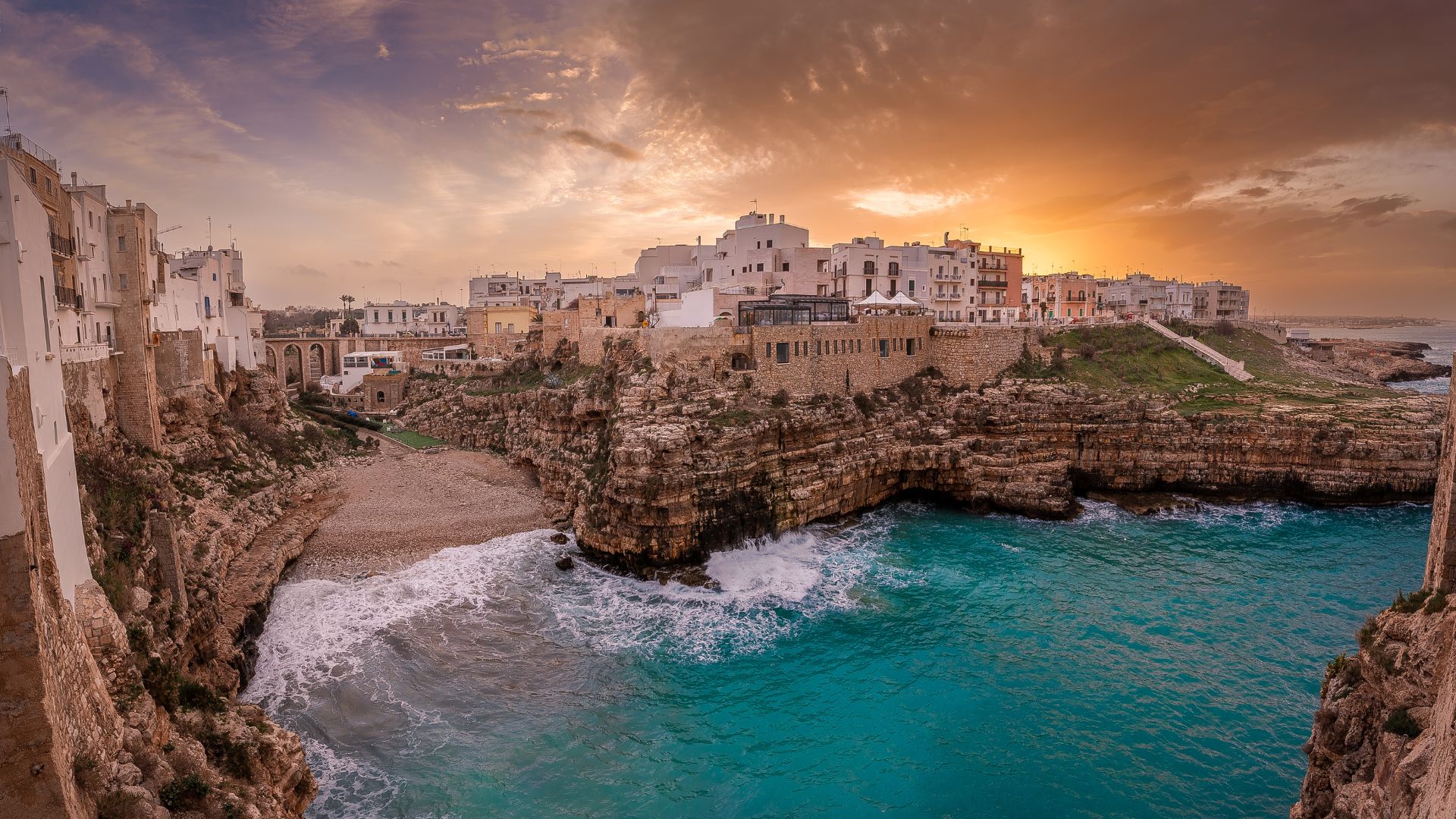
Cliff-Wrapped Paradise: The Allure of Polignano’s Beach
Polignano a Mare’s beaches don’t look like anywhere else I’ve visited in Italy. Dramatic limestone cliffs cradle little pockets of shore, creating a setting that feels both wild and cozy.
What Makes the Beach So Unique
Lama Monachile (also called Cala Porto) is the town’s most famous beach. It hides between cliffs that rise straight from the sea.
The ancient Roman bridge frames the beach, making it one of Italy’s most photographed coastal spots. I can’t get over how the white stone buildings seem to balance on the cliff edges, almost floating above the turquoise water.
The beach isn’t big, but that’s part of its appeal. It feels like a hidden treasure—intimate and grand all at once.
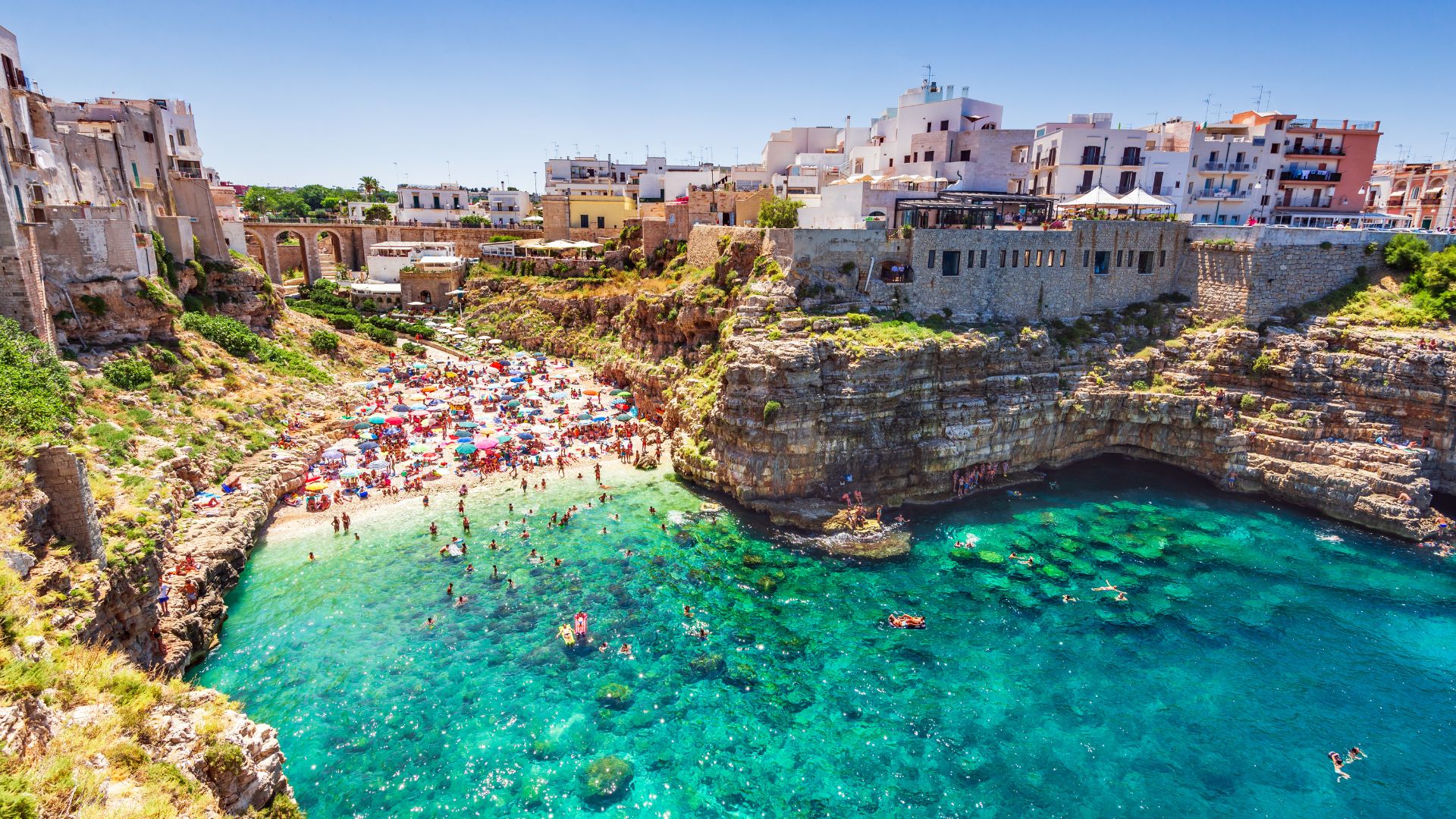
Sandy Beaches Versus Pebbled Shores
Don’t come here expecting soft sand. Polignano’s beach is all smooth white pebbles, which can be tough on bare feet. I always bring water shoes—trust me, you’ll thank yourself.
The pebbles help keep the water clear. Since there’s no sand to kick up, the sea stays crystal clear, perfect for swimming and snorkeling.
I used to miss sand, but the pebbles have their perks. They don’t stick to your skin or towel, so post-swim cleanup is a breeze. Plus, they don’t get as hot as sand, so you won’t burn your feet on a sunny day.
If you’re set on sand, you’ll find smaller beaches nearby, but they just don’t have the same dramatic cliffs.
Iconic Views and Hidden Corners
The classic view of Lama Monachile from above is Polignano’s calling card. Walk across the Roman bridge for that perfect shot of the beach and sea below.
Head into the old town (Centro Storico) through Porta Vecchia and you’ll find more stunning views of the coastline. The narrow streets twist toward balconies built right on the cliff edge, and the panoramas are breathtaking.
For something different, book a boat tour. Seeing the cliffs from the water reveals caves and coves you just can’t reach from land. The way the town perches above the sea looks almost unreal from this angle.
I have a favorite secret spot—a tiny platform carved into the cliff on the north side of Lama Monachile. Hardly any tourists find it, so it’s a peaceful place to watch the Adriatic.
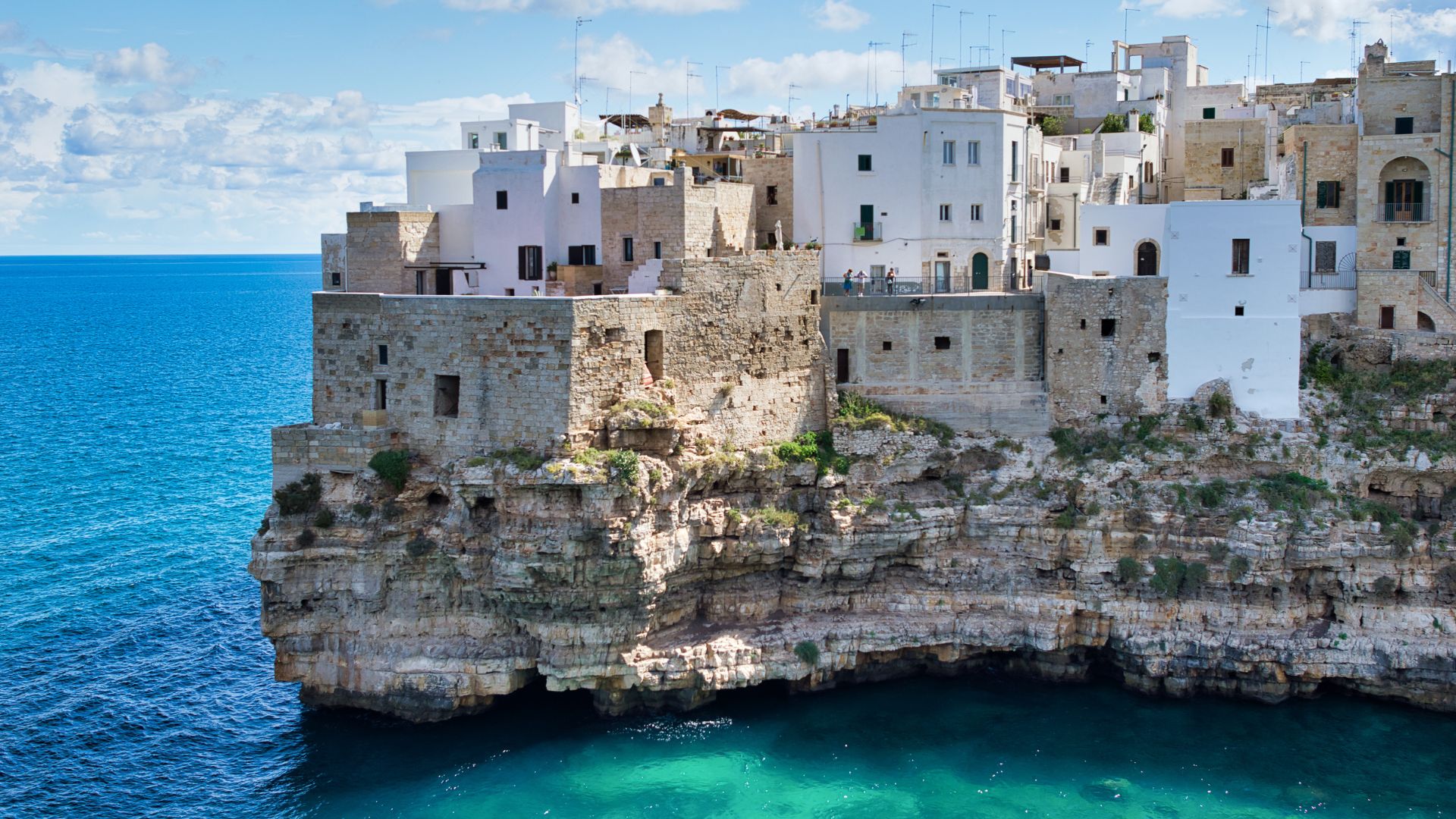
Swimming and Sunbathing Between the Cliffs
Swimming at Polignano’s beach feels like you’ve entered a natural pool, with cliffs wrapping around you. The water shifts from turquoise to deep blue as you move out, and I never get tired of those color changes.
Summer gets busy, so I show up early—before 9 AM—to snag a spot. The beach fills up fast, and by midday, it’s tough to find space for your towel.
If you’re feeling brave, you can join the locals and visitors who leap from the cliffs into the deep water below. Just make sure to check water depths and follow local advice before you jump.
Facilities are pretty basic. You’ll find a few vendors renting chairs and umbrellas, and there are some small cafés nearby for snacks and drinks. The town’s restaurants sit just up the stairs, so you’re never far from a good meal.
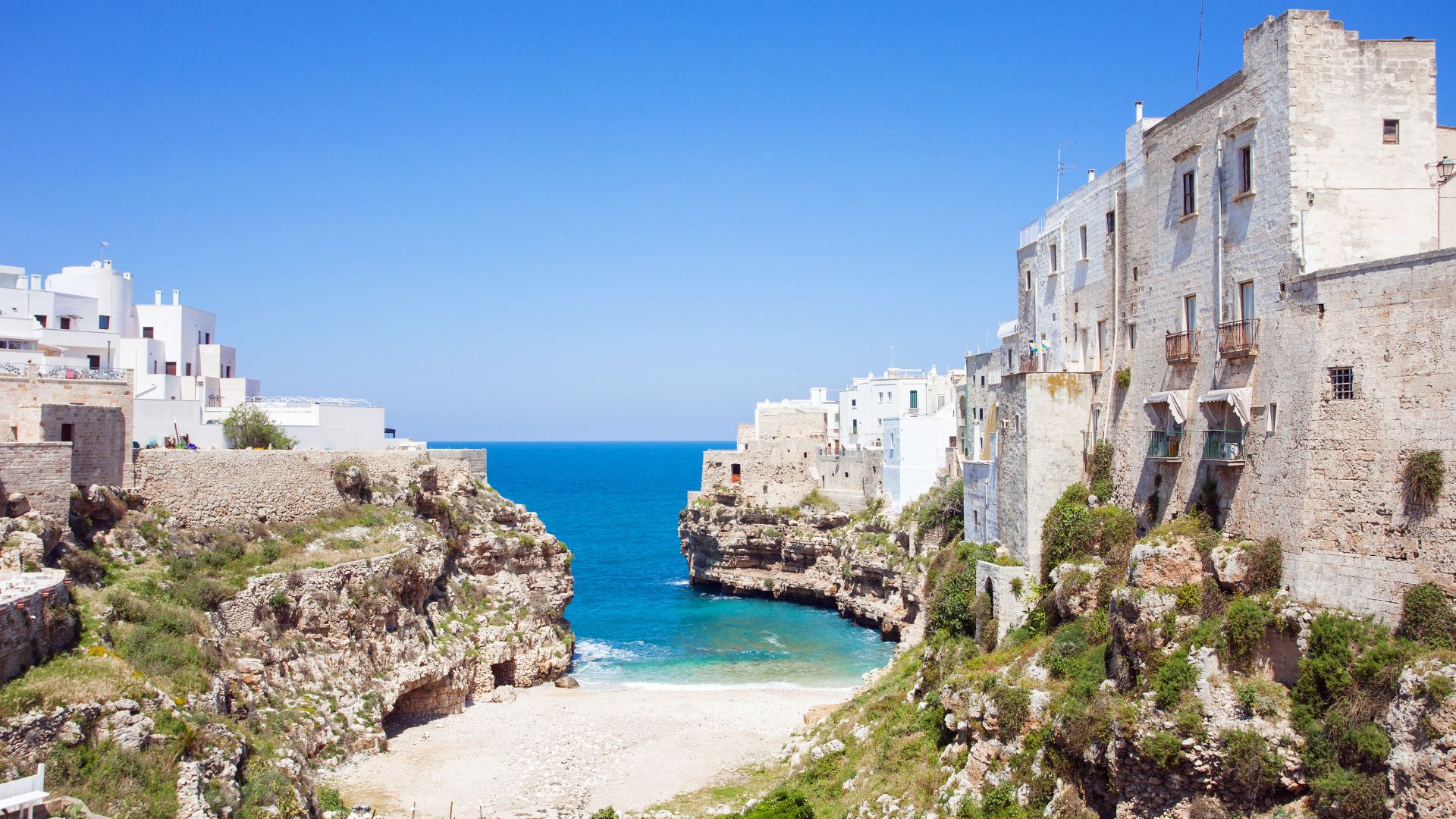
Discovering the Historic Centre
Polignano a Mare’s historic center sits high on limestone cliffs, blending history and natural beauty in a way that feels almost enchanted.
Charming Streets and Local Culture
Wandering Polignano’s centro storico is like stepping back in time. The narrow lanes twist and turn, lined with white-washed buildings and bursts of color from flower pots.
I kept stopping to admire the doorways and balconies that look out over the sea.
The heart of the town buzzes with life. Small cafés serve up Pugliese dishes, and I always order the local caffè speciale—coffee with lemon zest, sugar, and amaretto.
Poetry lovers will spot verses painted on walls and staircases, paying tribute to Domenico Modugno, who wrote “Volare” and was born right here.
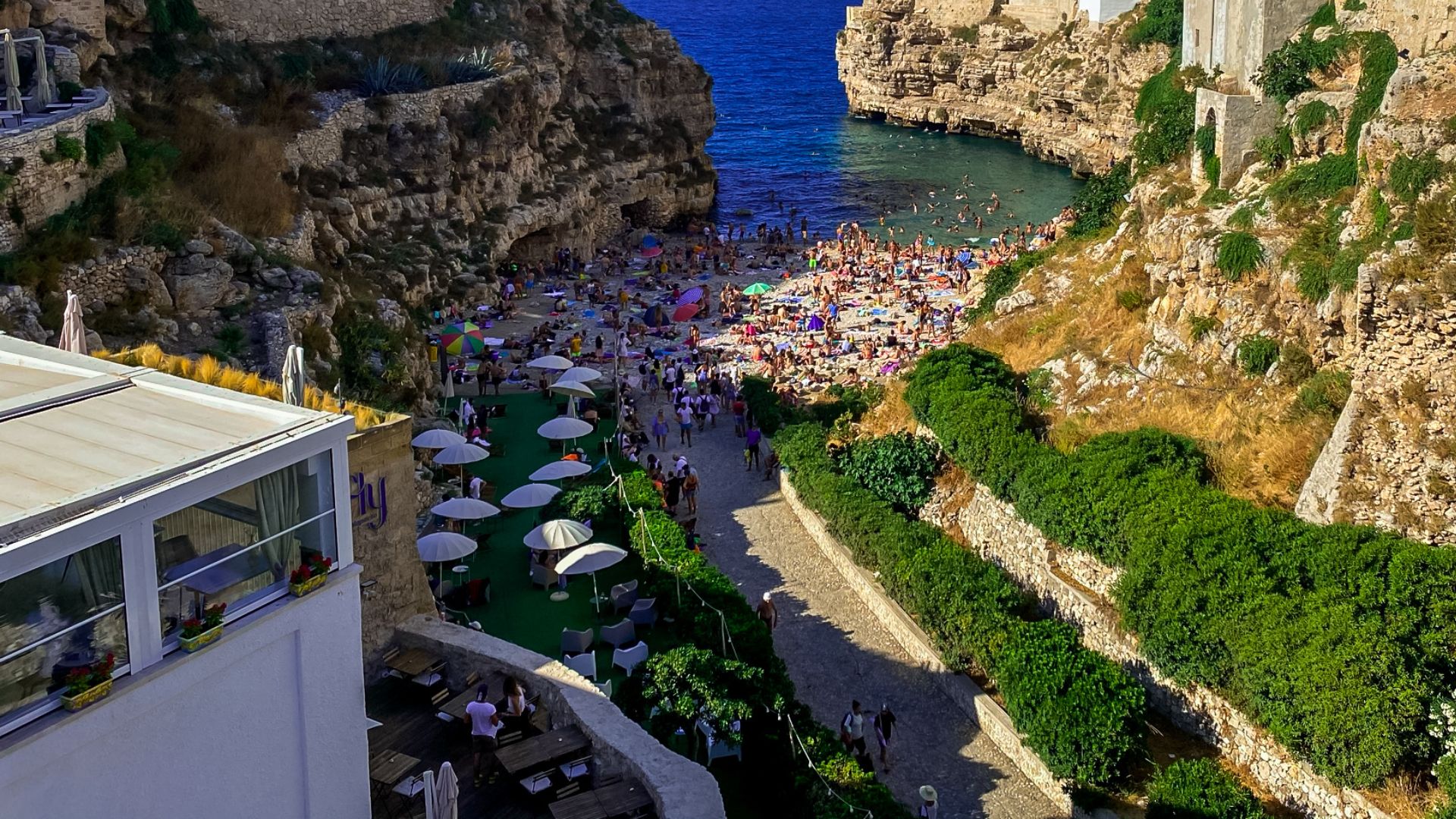
Landmarks Near the Cliffs
Porta Vecchia (Old Gate) marks the entrance to the historic center. It’s my favorite spot for a view—you step through the stone arch and suddenly see the turquoise waters of Lama Monachile below.
Piazza Vittorio Emanuele II is the main square, where locals gather in the evenings. The Chiesa Madre, from the 13th century, holds beautiful religious art.
Terrazza Santo Stefano is a cliff-edge viewing platform, and I’ve spent hours just watching the waves crash below. For the best photos, come at sunset when the golden light hits the white buildings.
There are a few small museums here, too, perfect for a quick stop between gelato breaks.
Culinary Delights and Seaside Restaurants
Polignano a Mare serves up some of the most unforgettable dining experiences I’ve had, with fresh seafood and Adriatic views that are hard to match.
Dining With a View
Whenever I visit, I make sure to have at least one meal overlooking the sea. The restaurants built right into the limestone cliffs are just something else.
With the waves below and the sun dipping into the Adriatic, even a simple plate of pasta feels magical. Many cliffside places book up weeks or months ahead, especially in summer.
Terraces carved from the rock give you panoramic views that go perfectly with the food. If you can, time your reservation for sunset—it’s an experience you won’t forget.
Local Italian Flavors
Pugliese cuisine fills the menus here, showing off the region’s fresh produce and seafood. I’ve fallen for the simple, bold flavors that highlight local ingredients.
You’ll find fresh catches like:
- Octopus
- Sea urchin
- Local white fish
- Mussels and clams
Handmade pasta is a staple, especially orecchiette, the regional specialty. It usually comes with rapini (broccoli rabe) and anchovies or in seafood versions.
You have to try the burrata cheese—Puglia is where it all started! The creamy inside and firm shell are a perfect combo. Pair your meal with Primitivo or Negroamaro wines from nearby vineyards for the full experience.
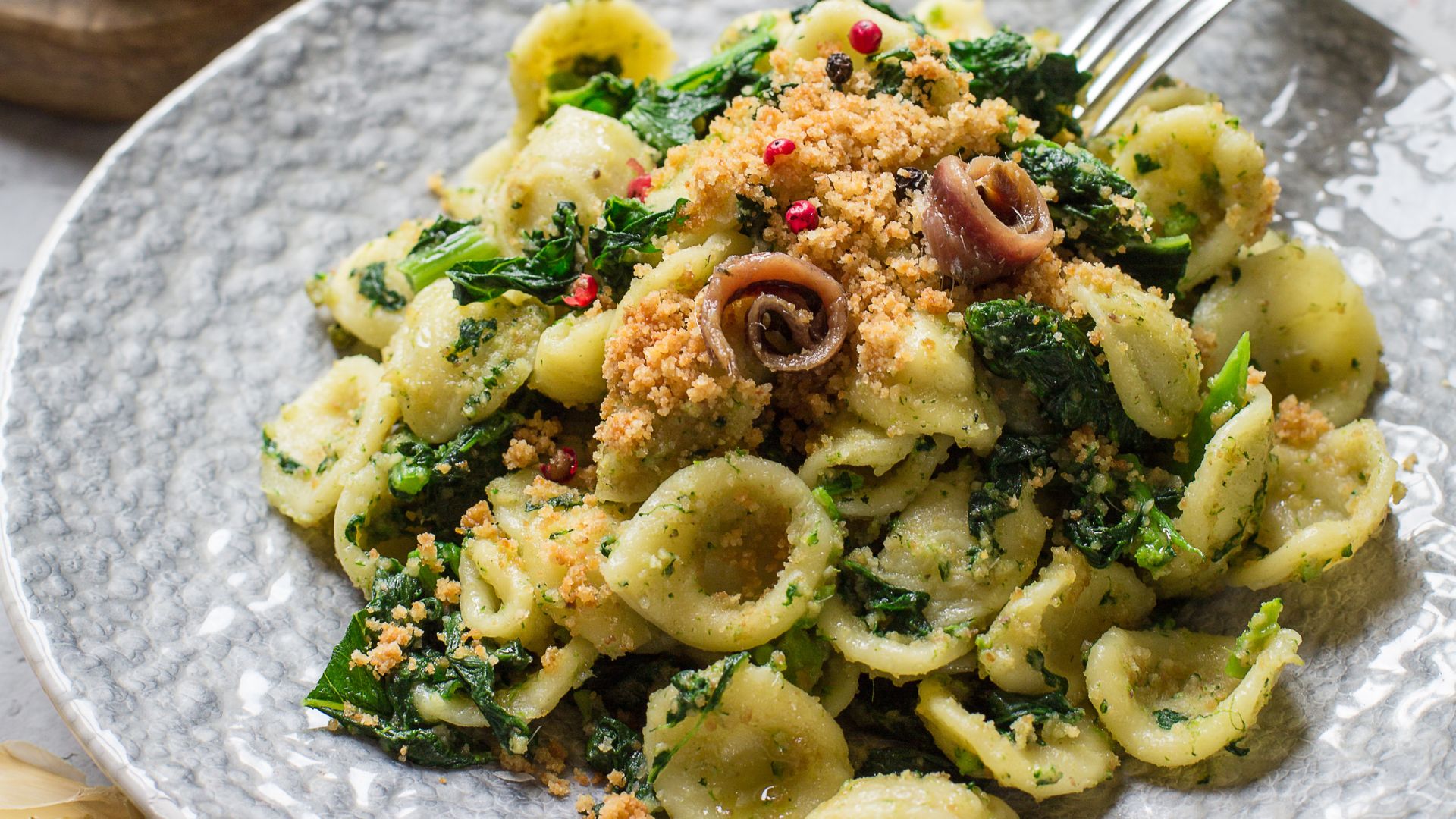
Notable Restaurants on the Cliffs
Grotta Palazzese is probably the most famous spot in Polignano. It’s set inside a natural limestone cave with a view of the sea that’s just unreal. I was honestly mesmerized, but you’ll need to book months ahead—it’s that popular.
Another favorite is Ristorante Grotta Palazzese, which offers timed reservations. The location is fantastic—many say it’s one of the most beautiful places in the world, and I can’t argue.
If you want something a little more relaxed, there are plenty of trattorias along the upper cliffs. These family-run spots serve authentic food at more reasonable prices, and the views are still lovely.
Many restaurants focus on sustainable fishing, which I appreciate. The seafood tastes incredibly fresh, caught that morning, and on your plate by evening.
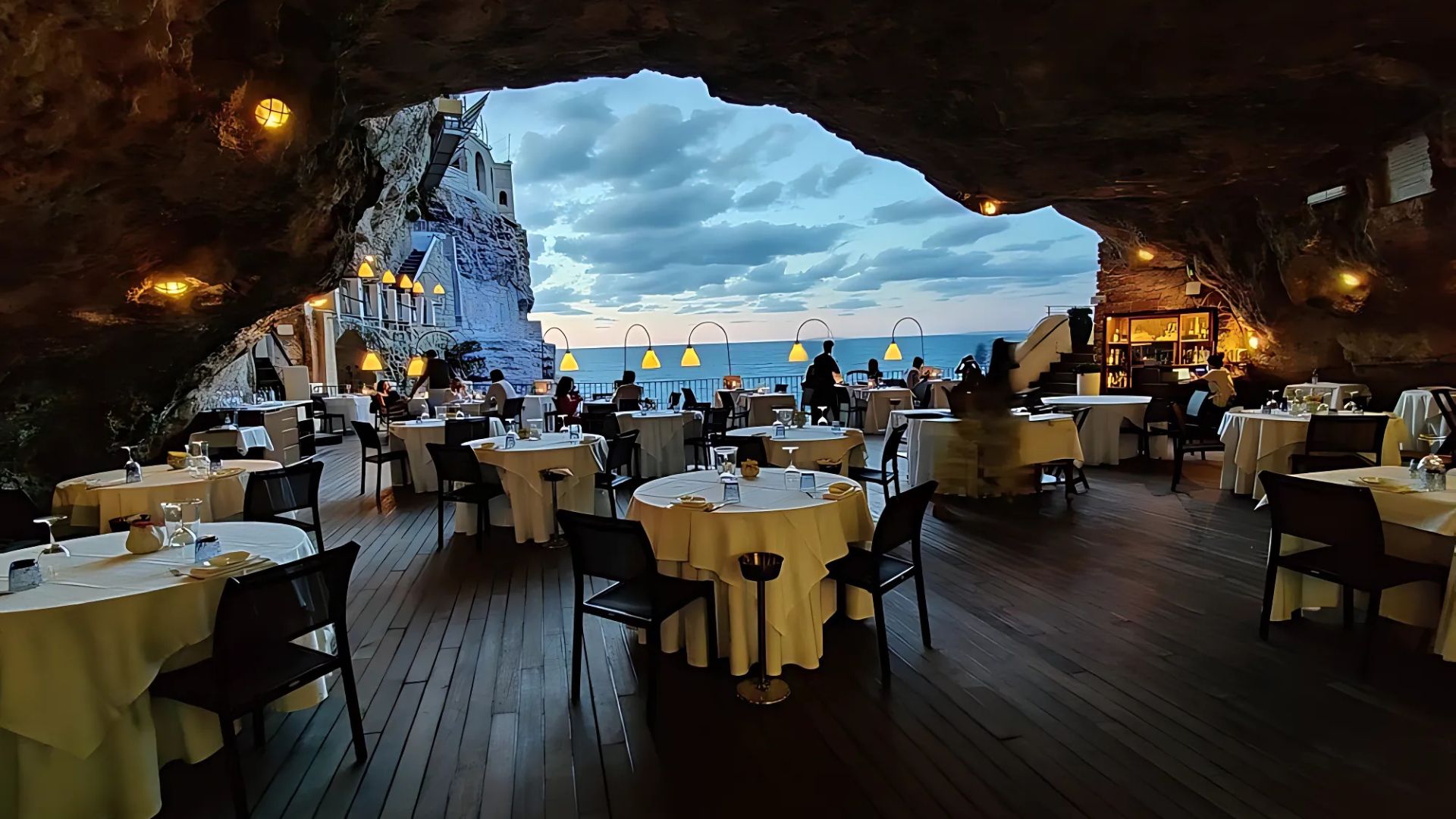
Planning Your Visit to Polignano’s Beach
Getting the most out of Polignano a Mare takes a little planning. I’ve pulled together the essentials to help you enjoy the cliffs and clear water with as few hassles as possible.
Best Times to Visit
Late May to early June or September—those are the best times to hit Polignano’s beaches. You get warm weather for swimming, but you don’t have to deal with the summer crowds.
July and August crank up the heat, and the beaches fill up fast. Temperatures hit 30°C (86°F), so if you go then, try to get there by 8 AM to snag a spot on the small pebble beach.
Winter, from November to March, changes the vibe completely. The town feels almost empty, and while the sea’s too cold for a dip, you can still soak in the dramatic coastline. I noticed that plenty of restaurants stay open all year.
Weekdays always feel much quieter than weekends, no matter when you visit. That’s especially true at Lama Monachile Beach (Cala Porto), which everyone seems to photograph.
Getting There and Navigating the Area
Polignano a Mare sits about 30 km south of Bari. I got there without any trouble by a few different ways.
Train: It’s honestly the easiest option from Bari—just 25 minutes—or from other towns in Puglia. The station sits just a 10-minute walk from the historic center.
Car: If you want to explore nearby spots, driving gives you freedom. But, wow, parking in summer gets tough. I usually go for the paid lots outside the center (€5-10 per day).
Bus: Several companies run routes from Bari and nearby towns.
Once you’re in Polignano, you can walk everywhere. The historic center feels tight and cozy, and you can reach Lama Monachile Beach with a quick stroll from Piazza Vittorio Emanuele II.
I recommend comfy shoes—the streets get steep and a bit uneven in places.
Google Maps usually does the trick for getting around, but honestly, chatting with locals for directions made my visit even better.
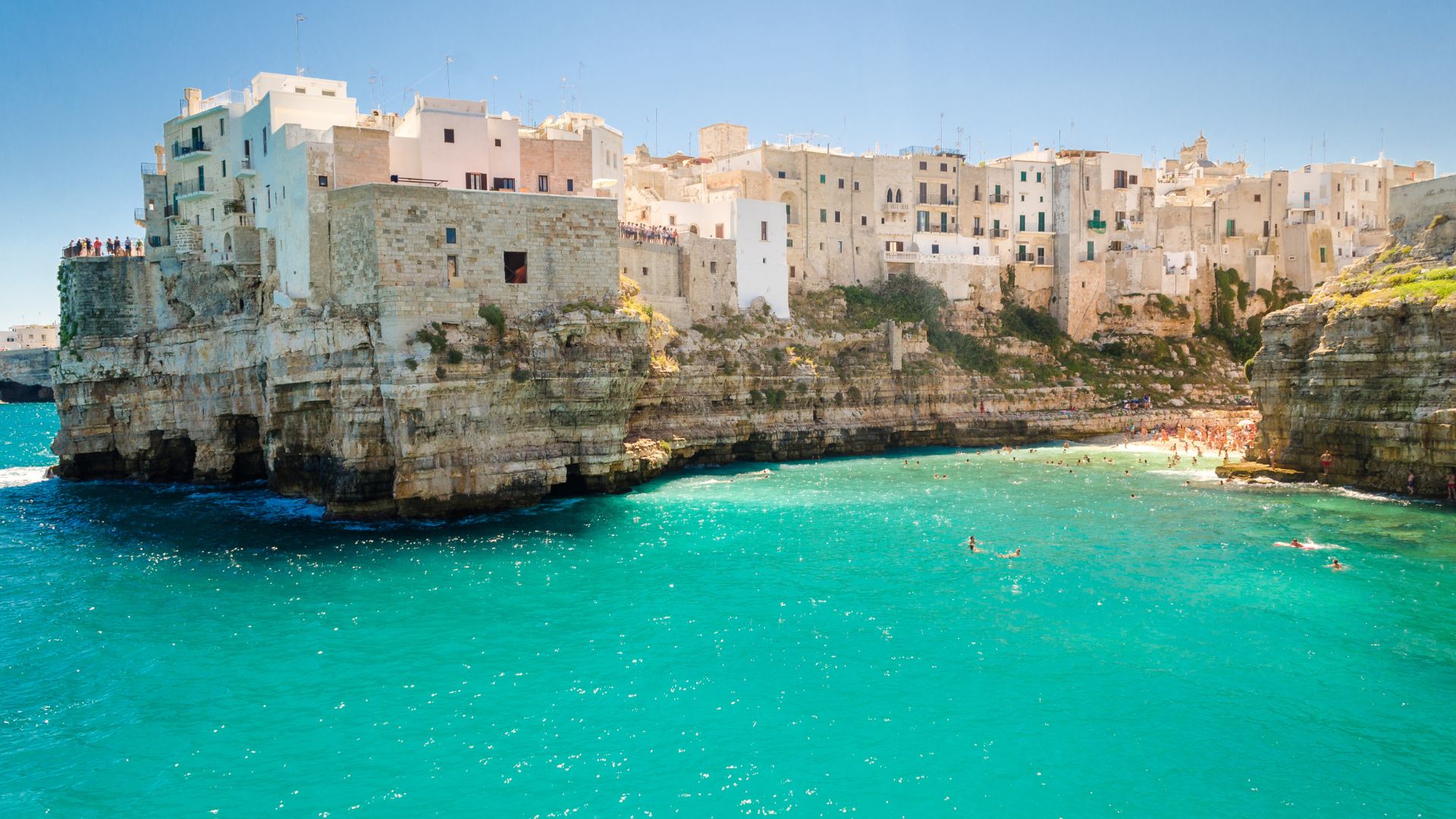
Tips for Capturing the Perfect Photos
Polignano’s dramatic setting gives you some incredible photo opportunities. I’ve found a few spots and times that make your shots pop.
Morning Light (7-9 AM): The east-facing cliffs catch this gorgeous golden light. Try capturing the famous beach view from the viewpoint near Via Narciso—it’s honestly hard to take a bad photo there.
Blue Hour: Right after sunset, the sky turns this deep blue, and the town lights start to twinkle. It’s kind of magical, honestly.
Terrazza Santo Stefano: This viewing platform hands you that classic postcard shot—beach, cliffs, the whole deal.
If you want something a little different, try walking along Ponte Lama Monachile. You’ll get some great eye-level views of the beach.
Or, check out the small plaza at Via San Vito. From there, you can snap some cool aerial shots.
Feeling adventurous? Take photos from inside the sea caves. You can hop on a boat tour for that.
The white buildings set against that turquoise water just look amazing. I’d suggest bringing a polarizing filter for your camera—it helps cut glare, and those blue tones really pop.

